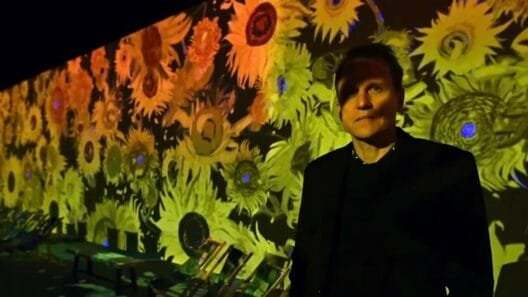Take a look in the mirror of this inventive Brazilian photojournalist
I discovered London-based freelance photojournalist Guilherme Zauith at the Candid Arts Studio in Angel. On display was his East London Hackney series, which may I add, completely drenched my ‘life is completely void of inspiration’ drought. Standing in front of his work sent me into an artistic alternate reality, as he had managed to capture parts of East London in such an organic and real kind of way, completely void of London’s highlighted glamour. In a rushed attempt to find out more, I flicked through his work on his website, and decided from that point that Guilherme had a lot to say about a small little community which heralds profound sentimental messages deep within its paved footpaths.
I met up with Guilherme Zauith at Brick Lane Coffee, and so began our discussion, with glorious coffee in tow. Guilherme was raised in Ribeirao Preto, Sao Paulo where he graduated with a degree in Social Communication. It was not until he later relocated to London where he graduated with a Masters in Photojournalism and Documentary Photography. Graduating with thirty seven other talented journalists, the competition was fierce, and thus forging his own style seemed paramount in advancing a career in Street Photography. Once living in Hackney, he began to find his greatest inspirations amongst his very own local streets, particularly around the Clapton Road neighbourhood. Guilherme explains that East London (particularly Hackney) has the acute ability to showcase London’s organic undergrowth in the most interesting of ways. He began to feed off the people and their stories, photographing them in and around their homes and places of work, in what ten years ago was considered one of the seediest places in London. His work has always been somewhat concerned with the facets of communal living, in places where glitz and glamour are completely stripped, and nothing but honest, real, and interesting people join together. He found that although Shoreditch, Broadway Market, and Brick Lane had generous amounts of ‘groove’ to offer, it was in and around Clapton Road and the Chatsworth Road Sunday Market that allowed him to forge a placid relationship with the communities, and showcase their candid and ‘real’ lives to the rest of London.
Early on in life, Guilherme was highly influenced by the legendary American film director George Orson Welles, also known as ‘the ultimate auteur’. In Guilherme’s work you can still find remnants of Welle’s work, especially with respect to the layered subjective elements, use of lighting and shadow, unique angles and focal points, as well as panoramic moments. Guilherme’s work also references notorious Baroque-style Italian director Federico Fellini, who has also been the inspiration of contemporary film makers like Woody Allen, Pedro Almodovar, and Tim Burton. However, Guilherme assures me that he is ‘just a normal guy trying to find some territory within the London photography field.’
In a metaphorical sense, his work is essentially like holding up a mirror to society, requiring people to take a moment to reflect and wonder. He captures moments, but these are no ordinary moments; they usually consist of a single human moment, caught in a decisive or poignant instant with various possible interpretations. He provides his audience with a single snapshot of someone else’s ‘normal’ life, which forces them to ultimately reflect upon their own. There is something so intriguing about human dissimilarity, and sometimes indifference – which I guess is the placard that Guilherme marches with on a daily basis.
Visit http://www.guilhermezauith.com/ to view Guilherme’s portfolio






